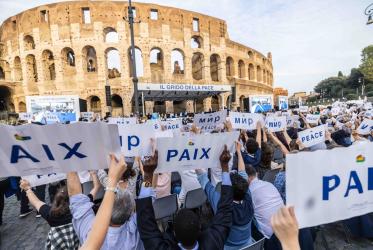Italien
Anm.: Die Liste der in den einzelnen Ländern vertretenen Kirchen wird noch bearbeitet.
Italy was the land of the Roman empire and the early Church of Rome. As of the 5th century, the Barbarian invasions resulted in the establishment of several kingdoms. In the Middle Ages city-states were formed, like Venice, that made Italy a powerful force, dominating much of the Mediterranean Sea region. Italian cities were at the centre of the European Renaissance. Italy became a nation-state in 1861 when it was united in a monarchy. During World War II, under the fascist dictator Mussolini, Italy allied with Nazi Germany. A democratic republic replaced the monarchy in 1946, and industrialization set in, especially in the north. The south is less advanced economically. Italy is a founding member of the European Union. Its culture, society and political life have been greatly influenced by the Catholic Church, which was the state church until 1984. The vast majority of Christians in Italy are Catholic. The Waldensians, a small, pre-Reformation church, have been present in the northern part of the country since the 13th century, in spite of severe persecution. Other small Protestant churches were estab- lished in the 19th century. They have come together in the Protestant Federation. In the 20th century several large Pentecostal churches emerged, and the Charismatic movement developed in the Catholic Church. In 2000 it was estimated that 6 percent of the Italian Christians were Evangelical/Pentecostal/Charismatic. Immigration from Africa and Asia has brought into being new Christian migrant communities.




